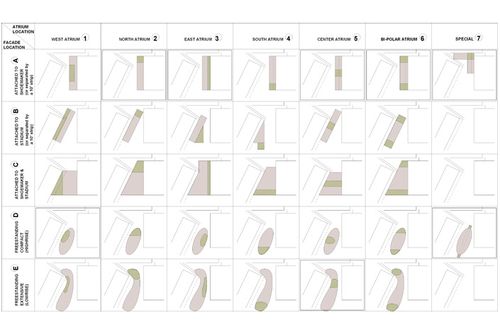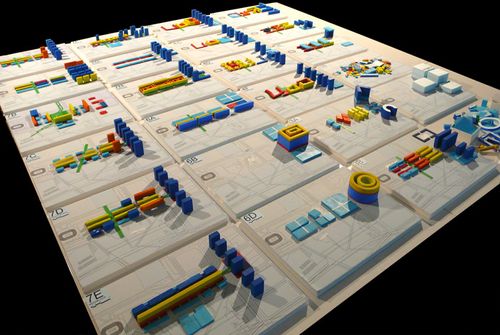AboutBernard TschumiHistoryRecent PressAwardsExhibitionsApproachTeam


While a rigorous theoretical argument was developed over a period of years, theory is rarely the starting point of a project. It is rather the general framework. Practice can precede theory, much as theory can precede practice. Below is a rough approximation of our approach:
1. Quickly diagram several alternative concepts, spatial configurations, or strategies. Then immediately leave them aside. If any of them are valid, they will reappear at a later stage.
2. Take the program. Assign dimensions, places, and relationships; distinguish between generic and specific programmatic spaces; test alternatives. Do it quickly; be precise, but not necessarily detailed.
3. Introduce circulation or vectors of movement, establish priorities in how the building will be used and experienced. Enhance sequences (test alternatives). Establish whether the envelope is unitary or broken down into two or more sub-envelopes in relation to the findings of steps 1 and 2. Look at material options.
4. Test alternatives. If applicable, take advantage of the site constraints: zoning constraints, slope, height limitations, potential materials as per climate or local construction industry, but with a broad approach.
5. Then, only then, begin conceptual work. Do not start with a form. Make a concept emerge, balancing steps 1 to 4. No form, please (unless it can become a generating concept). What is a concept? There is no answer to this. There can be no restriction to what a concept or overriding idea is. The concept must allow for the resolution of steps 1 to 4.
6. Then, only then, let the image or the architecture emerge. Select final materials; architecture is the materialization of concepts. The image will emerge with energy and evidence. Sometimes the image is no image, if the concept calls for no image.
7. As the project (concept) is developed, weaving into it all technical constraints and construction details, keep utmost clarity in mind. Never do anything for design’s sake, work only for concept’s sake. (Stay on concept the way one stays on message: Repeat, repeat, repeat. Edit, edit, edit.) Construction or budget constraints are good ways to clarify priorities.
8. You may break rules, but never at the expense of concept.
1. Quickly diagram several alternative concepts, spatial configurations, or strategies. Then immediately leave them aside. If any of them are valid, they will reappear at a later stage.
2. Take the program. Assign dimensions, places, and relationships; distinguish between generic and specific programmatic spaces; test alternatives. Do it quickly; be precise, but not necessarily detailed.
3. Introduce circulation or vectors of movement, establish priorities in how the building will be used and experienced. Enhance sequences (test alternatives). Establish whether the envelope is unitary or broken down into two or more sub-envelopes in relation to the findings of steps 1 and 2. Look at material options.
4. Test alternatives. If applicable, take advantage of the site constraints: zoning constraints, slope, height limitations, potential materials as per climate or local construction industry, but with a broad approach.
5. Then, only then, begin conceptual work. Do not start with a form. Make a concept emerge, balancing steps 1 to 4. No form, please (unless it can become a generating concept). What is a concept? There is no answer to this. There can be no restriction to what a concept or overriding idea is. The concept must allow for the resolution of steps 1 to 4.
6. Then, only then, let the image or the architecture emerge. Select final materials; architecture is the materialization of concepts. The image will emerge with energy and evidence. Sometimes the image is no image, if the concept calls for no image.
7. As the project (concept) is developed, weaving into it all technical constraints and construction details, keep utmost clarity in mind. Never do anything for design’s sake, work only for concept’s sake. (Stay on concept the way one stays on message: Repeat, repeat, repeat. Edit, edit, edit.) Construction or budget constraints are good ways to clarify priorities.
8. You may break rules, but never at the expense of concept.